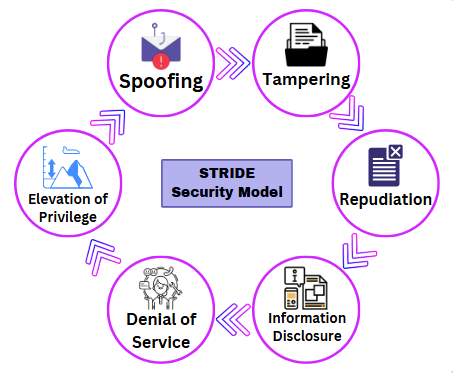Abstract
The Industrial Internet of Things (IIoT) is a foundational pillar of Industry 4.0, enabling real-time data exchange and automation through the integration of smart sensors, actuators, and networked machinery. While this interconnectivity enhances operational efficiency and decision-making on the industrial floor, it also introduces complex cybersecurity challenges. This work reviews literature related to the IIoT with a focus on threat modeling techniques, including mitigation strategies. It comprises the theoretical frameworks and the implemented solutions within the domains of critical infrastructure and manufacturing. The coexistence of legacy control software systems, stringent real-time performance requirements, and heterogeneous modern devices, particularly within SCADA networks and cyber-physical systems, complicates the design and implementation of robust security mechanisms. This review synthesizes recent advancements in IIoT security with a specific focus on threat modeling methodologies and mitigation strategies. Key attack vectors such as denial-of-service (DoS) floods, data injection, and Advanced Persistent Threats (APTs) are examined. The paper further analyzes contemporary defense approaches, including AI-driven intrusion detection systems, blockchain-based trust frameworks, and software-defined networking solutions. This work aims to support both researchers and practitioners in developing scalable, resilient, and secure IIoT infrastructures suitable for modern industrial environments.
Keywords
industrial internet of things
cyber security
denial-of-service
blockchain
Data Availability Statement
Data will be made available on request.
Funding
This work was supported without any funding.
Conflicts of Interest
The authors declare no conflicts of interest.
Ethical Approval and Consent to Participate
Not applicable.
Cite This Article
APA Style
Ali, A., Ali, M., Mushtaq, U., & Akram., M. A. (2025). Secure Software Engineering for Industrial IoT: A Comprehensive Review of Threat Modeling and Defense Mechanisms. ICCK Journal of Software Engineering, 1(1), 17–31. https://doi.org/10.62762/JSE.2025.834259
Publisher's Note
ICCK stays neutral with regard to jurisdictional claims in published maps and institutional affiliations.
Rights and Permissions

Copyright © 2025 by the Author(s). Published by Institute of Central Computation and Knowledge. This article is an open access article distributed under the terms and conditions of the Creative Commons Attribution (CC BY) license (
https://creativecommons.org/licenses/by/4.0/), which permits use, sharing, adaptation, distribution and reproduction in any medium or format, as long as you give appropriate credit to the original author(s) and the source, provide a link to the Creative Commons licence, and indicate if changes were made.


 Submit Manuscript
Edit a Special Issue
Submit Manuscript
Edit a Special Issue

 Copyright © 2025 by the Author(s). Published by Institute of Central Computation and Knowledge. This article is an open access article distributed under the terms and conditions of the Creative Commons Attribution (CC BY) license (https://creativecommons.org/licenses/by/4.0/), which permits use, sharing, adaptation, distribution and reproduction in any medium or format, as long as you give appropriate credit to the original author(s) and the source, provide a link to the Creative Commons licence, and indicate if changes were made.
Copyright © 2025 by the Author(s). Published by Institute of Central Computation and Knowledge. This article is an open access article distributed under the terms and conditions of the Creative Commons Attribution (CC BY) license (https://creativecommons.org/licenses/by/4.0/), which permits use, sharing, adaptation, distribution and reproduction in any medium or format, as long as you give appropriate credit to the original author(s) and the source, provide a link to the Creative Commons licence, and indicate if changes were made. 